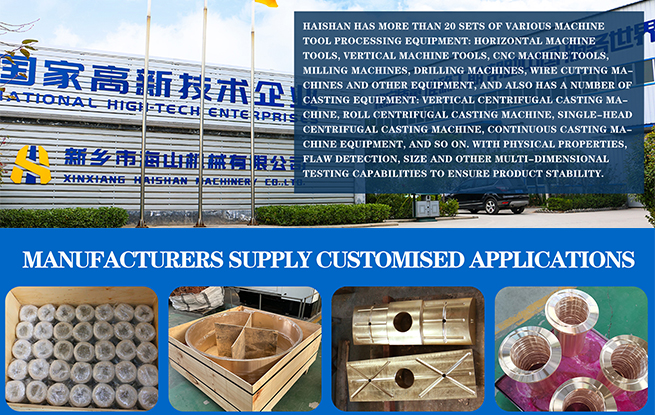Copper sleeve, with its excellent wear resistance, can effectively resist the loss caused by frequent friction between components during long-term mechanical operation, greatly extending the service life of the equipment
Casting process:Centrifugal casting, sand casting, metal casting
Application:Mining, coal mining, machinery industry
Surface finish:Customisation
Material:Customised copper alloys


